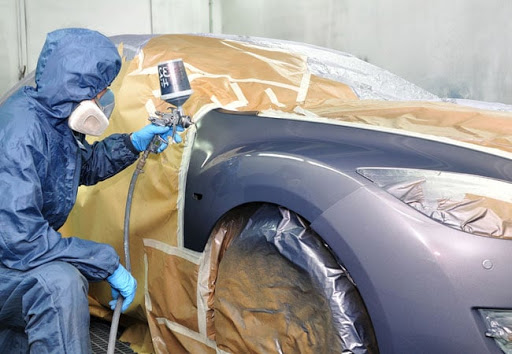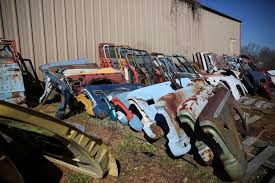Paintless Dent Repair is “Paintless”
 PDR is a auto dent removal process that eliminates the need for painting because dents & dings are gently lifted from the metal panel by using a unique set of tools that allow a technician to get behind the panel and push them out. The paint is not disturbed, therefore, no painting. Why is this important for our environment?
PDR is a auto dent removal process that eliminates the need for painting because dents & dings are gently lifted from the metal panel by using a unique set of tools that allow a technician to get behind the panel and push them out. The paint is not disturbed, therefore, no painting. Why is this important for our environment?
Paint is composed of four basic types of materials:
solvent — The liquid that carries the solid components of paint. It must be present to allow the paint to be of correct consistency for application by brush, roller, spray or dipping. The most common solvents used in architectural paints are water and organic solvents.
binder — The binder or resin is one of the most important components of paint. It is the basic solid film former that remains after the solvent has evaporated and which binds the pigment particles together into a cohesive paint film.
pigment — This is the component that gives paint its other most important properties of color and opacity. The pigments used in paint are normally present as fine solid particles that are dispersed, but not soluble, in the binder and solvent.
additives — Additives are the specialist components of paint. They are used in small quantities to improve production and storage properties of the liquid paint product as well as application and other performance properties of the paint film (e.g., anti-marring agents, anti-mold agents).
The most important environmental impact from paints is the release of volatile organic compounds (VOCs) during the drying process after the coating is applied. Virtually everything but the solids in a typical paint formulation is released to the air. Once in the atmosphere, VOCs participate in the formation of ozone. In the presence of nitrogen oxides (NOx) and sunlight, VOCs react with oxygen in the air to produce ozone, the most toxic component of the form of pollution commonly known as smog. Ozone attacks lung tissue, and is very injurious, even in very low concentrations. To prevent the formation excessive levels of ozone, the VOC content of paint, and its conditions.
Reference: International Journal of Research.
 No Discarded Panels
No Discarded Panels
Instead of discarding panels and depositing them in landfills, the damaged panels are repaired.
When you repair, you prevent the panel from being discarded into an already jam-packed junkyard where it will eventually rust away with thousands of other discarded panels.
Additionally, when these discarded parts begin to decay, they release hazardous substances into the environment.